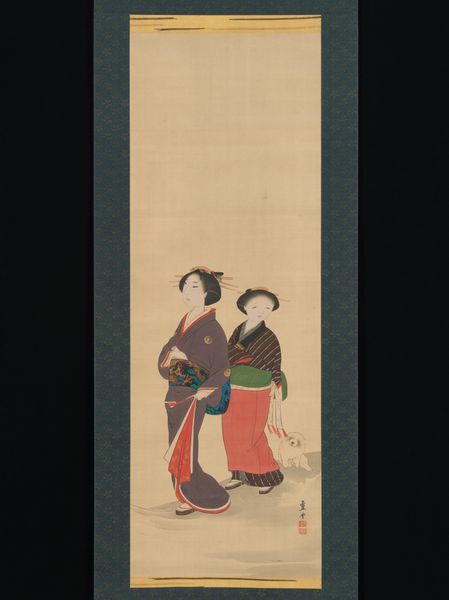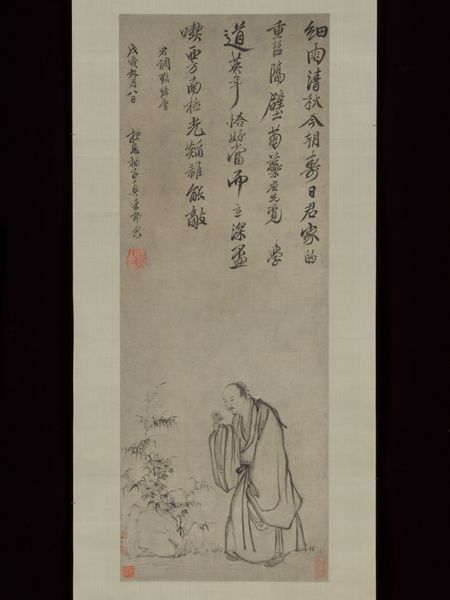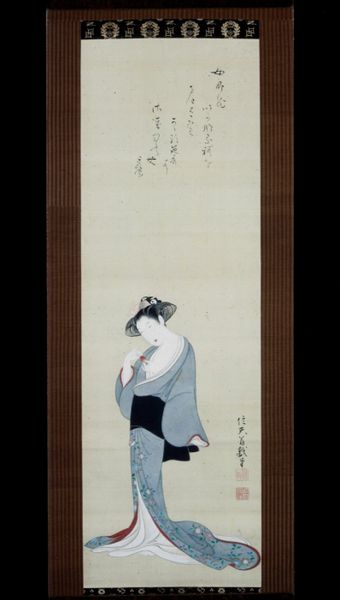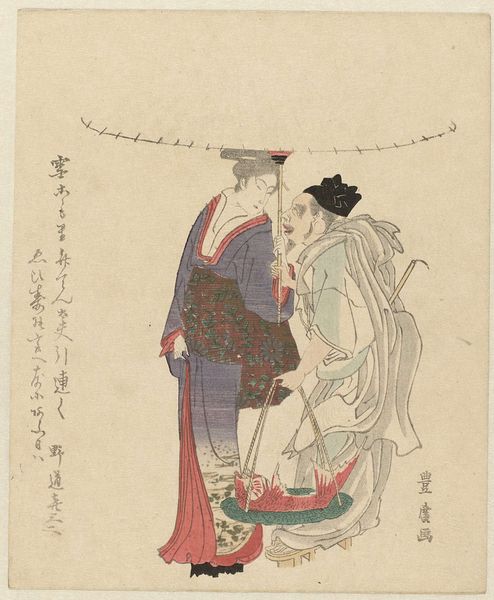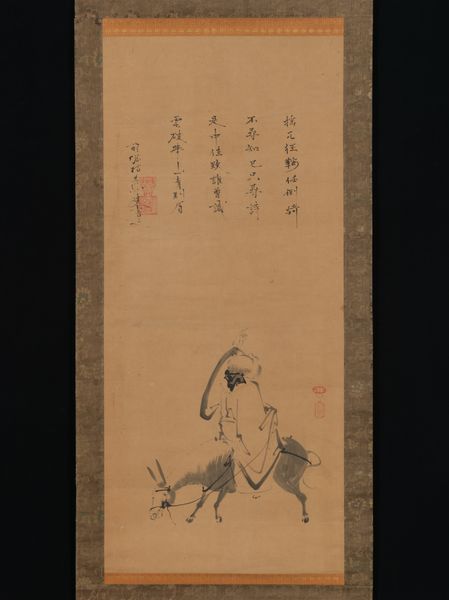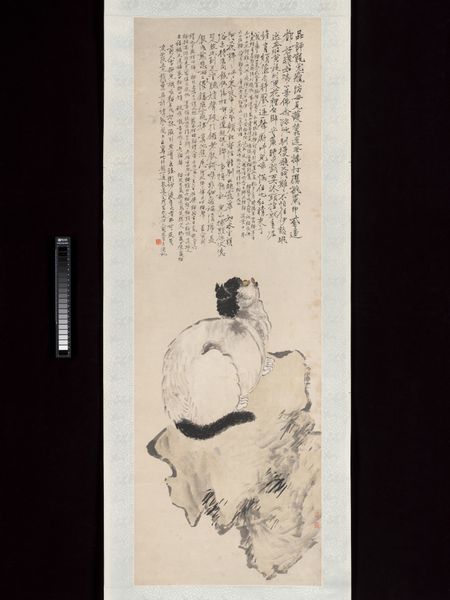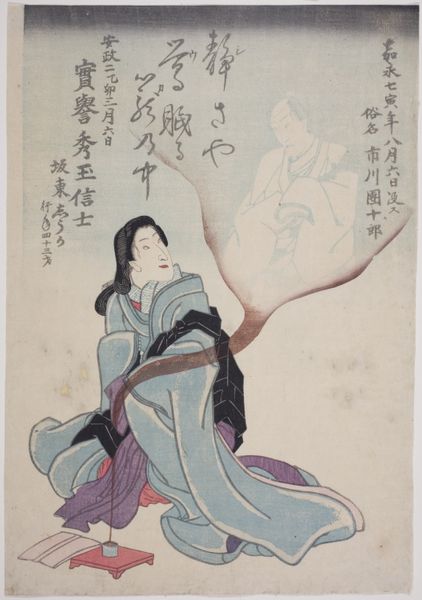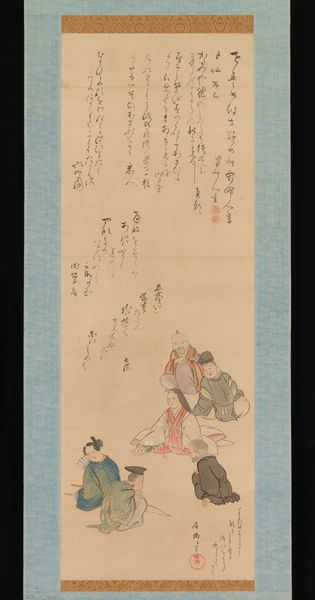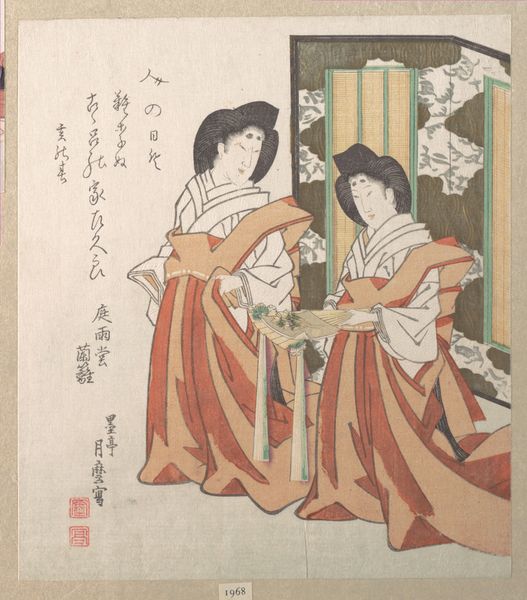
Hanshan and Shide (Japanese: Kanzan and Jittoku) 1767 - 1799
0:00
0:00
painting, paper, ink
#
portrait
#
painting
#
asian-art
#
ukiyo-e
#
japan
#
figuration
#
paper
#
ink
#
men
Dimensions: Image: 39 1/2 × 11 15/16 in. (100.4 × 30.3 cm) Overall with mounting: 69 11/16 × 15 3/8 in. (177 × 39 cm) Overall with knobs: 69 11/16 × 17 5/16 in. (177 × 44 cm)
Copyright: Public Domain
Curator: Before us, we have "Hanshan and Shide," painted between 1767 and 1799 by Itō Jakuchū. The artwork, rendered in ink on paper, resides at the Metropolitan Museum of Art. Editor: The first impression is charmingly austere, almost deceptively simple. The economy of line, the sheer blackness of the ink against the ground—it creates a study in contrasts and balances, doesn't it? Curator: Precisely. The work exemplifies Jakuchū's mastery of line. Note the expressive quality achieved with minimal strokes. It presents a unique spatial relationship—figures dominate, yet feel confined within the vertical scroll format. How might we read the cultural context of this interplay? Editor: The figures are of course, Hanshan and Shide, Zen monks revered in both Chinese and Japanese traditions. Their ragged appearance is iconic: the broom raised between them signifies the rejection of worldly possessions, an embracing of poverty as spiritual freedom. The broom held between them like an antenna to heaven. It symbolizes not just austerity, but an active purging. Curator: Observe how the application of ink modulates the depth. Solid blacks render contour lines with a sharp crispness. Soft graded washes add depth, which serves to flatten the picture plane, pulling it forward and heightening the viewer's awareness of the surface. Does this tension enhance or detract from the symbolic meaning? Editor: I find it enriches it immensely. This tension mirrors the tension within the figures themselves—between worldly detachment and intense, almost comical human presence. Their legendary eccentricity and irreverence becomes tangible in their sketched immediacy. Curator: Consider the brushstrokes. How would you relate it to traditional portraiture versus an act of pure formalism? Editor: Though Jakuchū employs established iconography, his individualistic expression cannot be denied. In a way, the familiar motifs, like the bamboo broom, provide a structural anchor allowing the artist the freedom to investigate texture and the human form so vigorously and individually. It also demonstrates cultural continuity—an eternal message refracted through Itō Jakuchū’s specific hand. Curator: Your observations suggest the work exists as a perfect encapsulation. A study of form and a vessel of cultural memory... Fascinating. Editor: A captivating synthesis, wouldn't you agree?
Comments
No comments
Be the first to comment and join the conversation on the ultimate creative platform.
